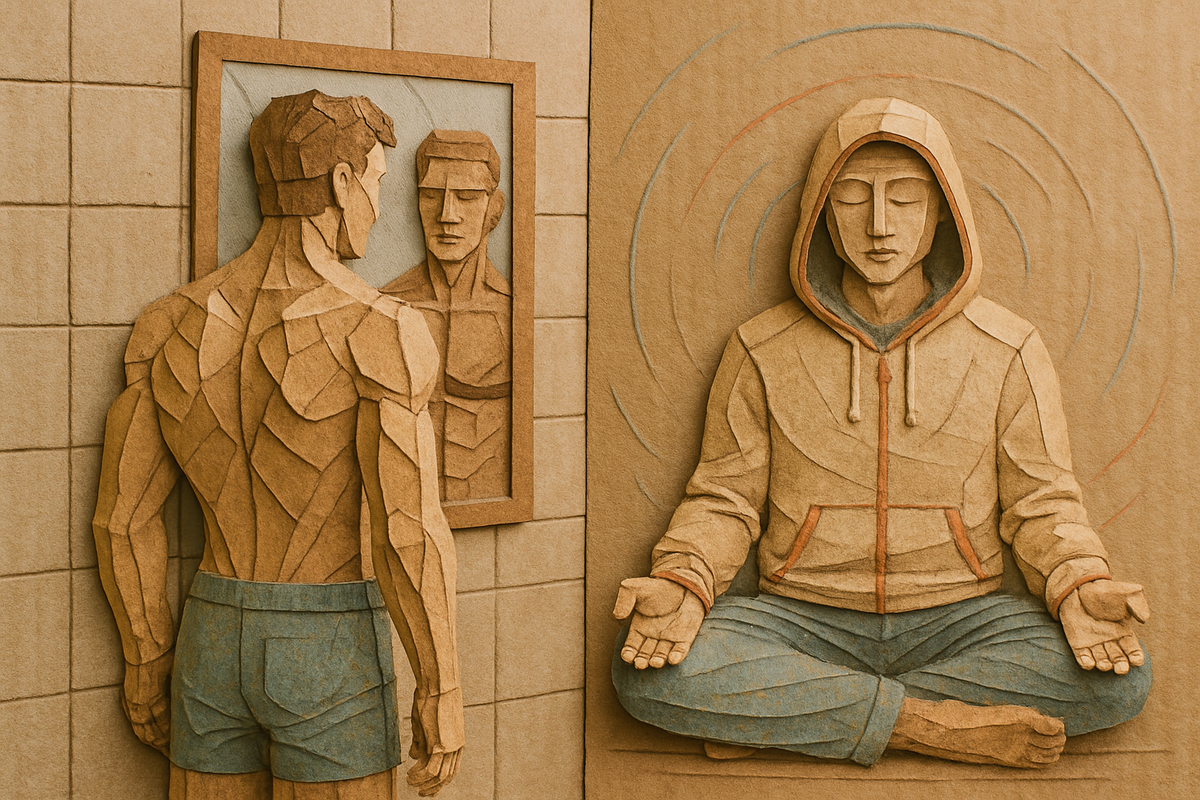What Lifting Taught Me — About the Mirror, and Beyond It.
Motivation can start with the mirror — and that’s okay. What matters is letting it evolve into something that keeps you coming back.

For a lot of people, lifting starts with one goal: to look better.
That’s not something to apologize for. It’s not shallow. In fact, it’s one of the most honest reasons to train — and for many of us, it’s what gets us through the door in the first place.
Wanting to feel more confident in your own body is real. And early on, visible changes are one of the few forms of progress you can actually see. Muscle definition, posture, symmetry — these things become markers that the effort is working. And when other people start to notice, it can reinforce the momentum. Compliments, double takes, even subtle shifts in how you’re treated — all of it feeds the sense that you’re becoming something stronger, more stable, more in control.
And that’s valid.
The mirror can be a powerful motivator. It can build consistency. It can anchor discipline. But it’s also just one part of a much bigger picture.
Over time, many lifters begin to notice a shift. The external motivation doesn’t disappear, but something internal starts to take up more space. You begin to care about how you feel after a workout — not just how you look. You start paying attention to recovery, to sleep, to mobility, to focus. You might find yourself training not just for physique, but for clarity, longevity, and presence.
The gym becomes less of a performance space and more of a personal one — a kind of moving meditation. A calibration point. A way to return to yourself.
One of the things that’s helped me most in that shift is changing who I compare myself to.
Instead of measuring progress against other people — their physiques, their lifts, their routines — I’ve started comparing my current metrics to my own from last week, last month, last year. That switch has made a huge difference. It’s taken the edge off the pressure to “catch up” or constantly level up. Progress doesn’t always move fast — but when you zoom out and look at your own long arc, you usually see it’s there.
But here's the thing: not everyone needs to make that shift.
There’s nothing wrong with training primarily to build a physique you’re proud of. Aesthetic goals are still valid goals — just like performance, strength, endurance, or peace of mind. What matters is that your training reflects something meaningful to you.
And sometimes, your goals will fade or shift completely. That doesn’t mean you’ve failed — it means you’re human. If you lose motivation, if your relationship with the gym changes, if you step away for a while to figure out what you actually want — that’s fine. In fact, it’s healthy.
You’re allowed to return with different reasons than you had before.
Whether you’re chasing a pump, dialing in your breath, rebuilding consistency, or just trying to get through a tough week — the gym can hold space for all of it. It's not just about the mirror, and it’s not just about optimization. It's about showing up, in whatever way makes sense for where you're at.
Let your reasons evolve. Or don’t. Just make sure they’re yours.
Curious what my training actually looked like during each phase of this shift?
In another post, I break down the different programs I followed — from physique splits to performance blocks to low-volume maintenance phases — and why each one made sense at the time. If you're navigating your own shift in training goals, it might give you a few ideas for what to try next.